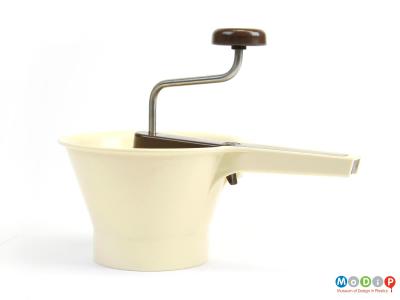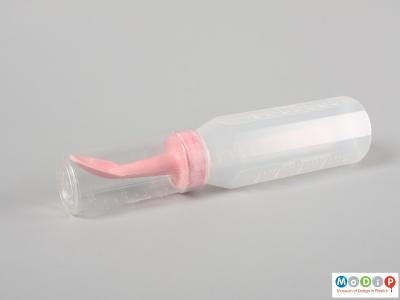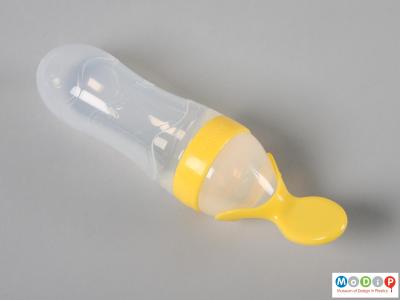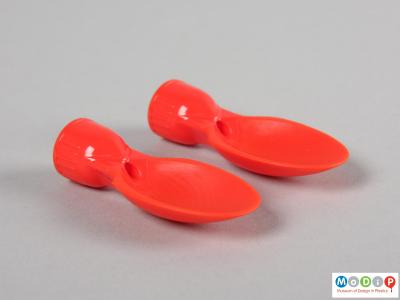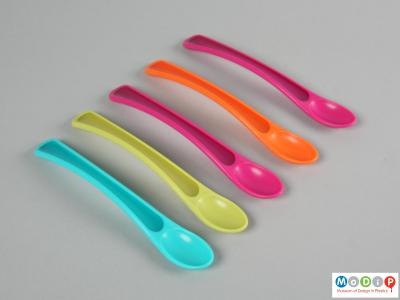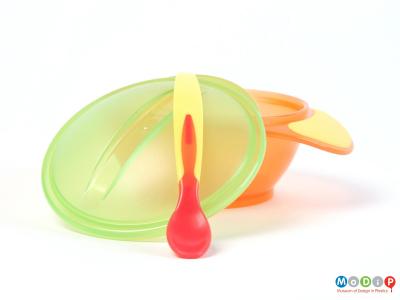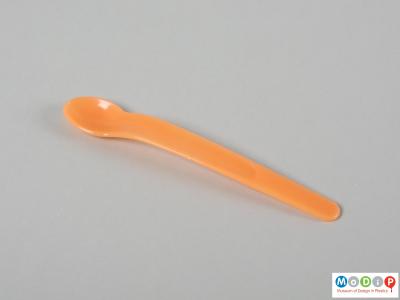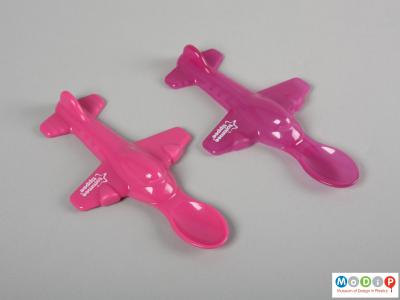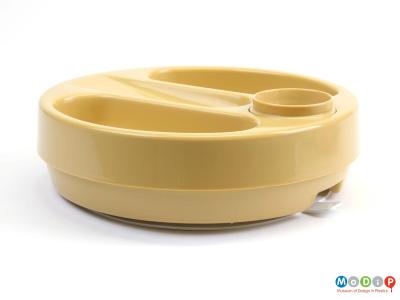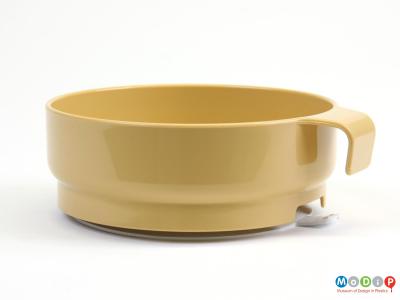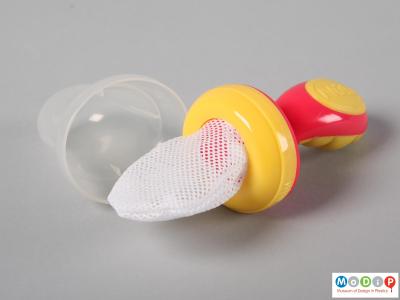Babies usually start to be weaned on to solid foods from the age of 6 months. They begin with pureed food which has been passed through some kind of processor, such as this Boots food mill (1). For convenience, and to prevent a mess being made, carers could use a squeeze feeder (2 - 3) or purchase pouches of readymade feed and use a spoon attachment (4).
Infants have delicate mouths and gums. The Tommee Tippee spoons (5) have thermoplastic elastomer (TPE) on the edges of the bowl to provide a soft tip. Thermochromic materials (6 - 7) change colour if the food is too hot to feed to the baby.
To encourage infants to eat new foods parents pretend that the spoon is a train going into a tunnel or an aeroplane flying through the air. These spoons (8) play on this idea by taking the form of aeroplanes with moulded detail and wings.
Babies can be slow to eat their food, so plates with an internal heating system keep the food warm over a period of time. The Boots Keep Warm plate (9) has a void which is filled with hot water, like a hot water bottle, to achieve this.
Plates might have a suction ring (10) on the base to hold them securely in place on the table or highchair tray. This plate also can be held by the handle to keep the feeder’s hand away from the food.
When children start to eat food more solid than puree there is a risk of choking on small pieces of food. The Nibbler (11) has a mesh bag that contains whole pieces of fruit or vegetable so that the child can nibble. It can also be used to hold frozen food and can then be used as a teether.

